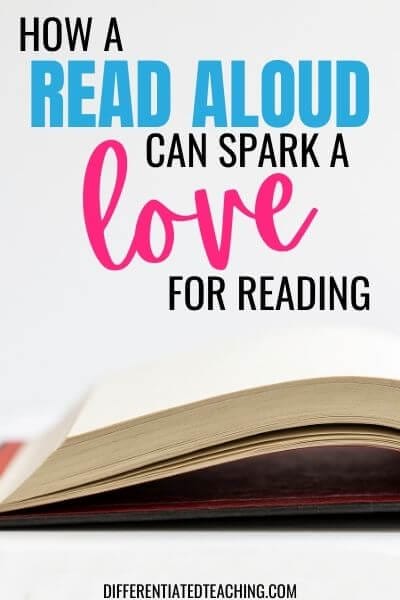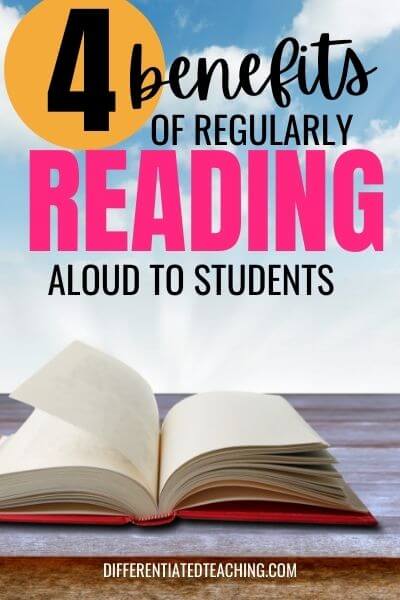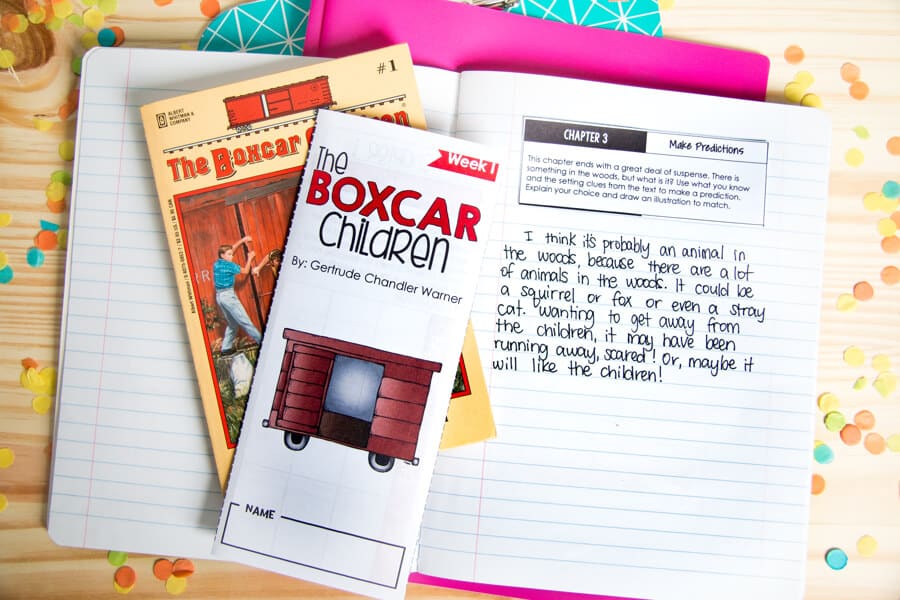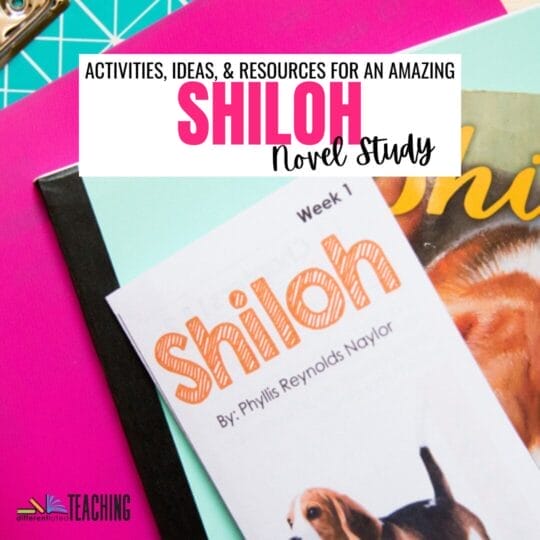5 Benefits of Read Alouds & How to Plan Yours
With a carefully chosen book, read aloud time is a magical part of the day where students can open their imaginations and even reluctant readers can find joy in a story.
However, many times a read-aloud is put aside due to the numerous stresses and requirements that must be fulfilled within the school day. It is easy to forget just how important this time is to the learners in your classroom.

Why the love of reading begins with the read aloud
I met Laura Ingalls Wilder when I was in second grade. That was when my teacher read Little House in the Big Woods each day after lunch. I’d settle in, put my head on the desk, and travel back in time.
I couldn’t understand how other students could waste this precious time going to the restroom or drinking fountain. To this day, I ensure everyone has had a chance to take care of business before I open our chapter book.
There was no pressure to sound out those tricky multisyllabic words. I didn’t have to follow along or worry about the assignment that was to come after the reading. All I needed to do was allow myself to be transported into the little cabin in the words of Laura and her family.
I could almost taste the chilly maple syrup, sticky from the snow. This ability to equalize the playing field for struggling readers is huge. Instead of being bogged down in the frustration of an overtaxed working memory system, reluctant readers get to listen and be in the book.
This is the moment when stories and books don’t represent work. They can be for enjoyment.
Benefits of read aloud in the classroom
Reading aloud isn’t just a fun bonding activity between parents and children. Incorporating read alouds into your daily routine, whether at home or in the classroom, offers a multitude of benefits for language development, comprehension, and creativity. In this article, we’ll explore the many advantages of read aloud sessions and provide tips on maximizing their impact.
So why do teachers read aloud, besides the fact that most of us love to read? What are we teaching our students during this time?
There are so many benefits of reading aloud in the classroom. However, it is often one of the first things teachers cut when things get hectic. Of course, this is understandable considering the pressure we’re all currently under to ensure we cover everything…but it is also very unfortunate.
Here are just a few of the benefits of read aloud that every teacher should be aware of:
1. Read alouds build classroom community.
Read alouds not only improve language skills but also foster a sense of community in the classroom. Shared reading experiences allow students to connect with each other and the teacher.
To build a strong sense of community, try incorporating community-building activities before, during, and after read aloud sessions.
Before reading, have students share connections related with the text and encourage them to interact with each other.
During the read aloud, pause to ask questions and encourage discussion.
After the read aloud, have students work in groups to discuss a scene or share favorite parts of the story. These activities help students connect with each other and build positive relationships.
Here are a few other activities you might incorporate after your read-aloud if time allows.
| Community-Building Activities | Benefits |
|---|---|
| Partner Reading | Encourages students to work together and build trust |
| Character Role-Play | Supports creativity and fosters empathy |
| Classroom Book Club | Encourages discussion and builds a sense of shared responsibility |
By incorporating community-building activities into read aloud sessions, students improve their language skills and develop a stronger sense of belonging in the classroom.
2. Read alouds help build background & reinforce instruction.
Teachers often choose books that relate to the content being taught in the classroom. This can be especially helpful for struggling learners because they often need multiple exposures to content.
For example, reading Sarah Plain and Tall to students on the East or West Coast gives them a picture of the prairie and a taste of the rural life on the plains. It is a study in the compare and contrast strategy as students see the ocean and the prairie through Sarah’s eyes.
This shared experience also levels the playing field between students who are avid readers and those who struggle to master the skill. It allows students who are slower to read the same access to literature their reading classmates take for granted.
3. Purposeful read alouds build stronger comprehension skills
Read alouds are not only enjoyable, but they can also enhance learners’ comprehension skills. By listening to someone else read the text, their mind can focus on understanding the story without the added strain of decoding and interpreting the words.
Here are some ways in which read alouds can help improve your comprehension:
- Benefit from hearing the text: Reading the text out loud can help you hear the language and the storyline. This can help you to understand the story elements better and imagine the scene in your mind.
- Understanding story elements: When listening, you can better understand the plot, characters, setting, and themes. This can help you to develop a deeper understanding of the text and its underlying messages.
- Making connections: Connecting different story parts can help you understand the narrative better. When listening to a story, think about how different events are related and try to connect them in your mind.
- Using visualization techniques: Visualizing the story in your mind can help you to understand better and remember it. Try to imagine the characters, settings, and plot as vividly as possible.
By actively engaging with the text during read alouds, you can improve your comprehension skills and gain a deeper understanding of the story.
“Reading aloud is an activity that anyone can do to improve their child’s reading and love of reading.”
3. Good read-aloud books can introduce students to a new genre or interest.
When the teacher reads a great book to the whole class, she opens the door for conversation about the book between all students. This can often include introducing a topic or genre that students are unfamiliar with.
In primary classrooms, this shared experience often turns into a topic of play as students re-enact the story during recess or centers. Older kids may find new hobbies or new genres they enjoy through these low-pressure exposures.
4. Read alouds model good reading habits & spark a love of reading.
By engaging in read alouds with children, you can create positive reading experiences that encourage a lifelong love for literature. Reading aloud can introduce children to new stories, characters, and genres, helping them discover what they love about reading.
Reading aloud can help spark interest in books from a young age. Children who are read to are likely to associate books with positive experiences, which can promote a love for reading. As learners are exposed to new stories, characters, and genres, they are more likely to discover what they enjoy about reading and develop a preference for certain types of literature.
Additionally, read alouds can establish a connection between children and books. When read alouds are associated with enjoyable shared experiences, children are more likely to develop a positive attitude towards reading. A love for reading can have a lasting impact on children’s academic performance, as they are more likely to engage in independent reading and perform better on reading assessments.
5. They enhance vocabulary and language skills.
Read alouds are not just enjoyable; they are linguistic treasure troves. They introduce learners to a diverse range of words, enhancing their communication skills and broadening their understanding of language.
Studies show that early exposure to read alouds is linked to larger vocabularies and enhanced language skills. This exposure is particularly beneficial for learners developing their language abilities or non-native speakers.
What to consider when planning a read-aloud
It might seem like you could pick any book from your classroom library to use as your next class read-aloud, and in theory, you absolutely can! However, some things to consider can help make this time more impactful for students.
As you plan for the next book you’ll read to your class, here are some things to consider.
Book choice
Choosing a read-aloud from different genres across the school year can open the world for young learners.
A child who loves to go to the library, and heads right for the non-fiction animal shelf every visit, may discover a kindred spirit in Peter while listening to Tales of the Fourth Grade Nothing.
Without the teacher handing students the keys of discovery, they do not know the wide world that awaits them with each trip to the library.
Timing
Listening to a good book helps children to relax and settle their bodies. As they get involved in the story, they physically relax, and their minds focus on a story outside of themselves. The recess squabbles, the anticipation of their extracurricular activities, and the insecurity about their place in the class all fade away as they get lost in someone else’s story.
For struggling students, who often find school a series of trials with more failures than successes, it’s a time to relax and enjoy a stress-free moment in their day.
As students lose themselves in a good story, they relax and forget to be anxious about upcoming tests and activities. One of my favorite benefits of read-aloud time is, they are in a better state of mind to jump back into the academic routine.
My second-grade teacher knew exactly what she was doing when she chose engaging, entertaining stories to read in those few minutes after lunch and recess.
Looking for your next read aloud books?
Now that you’ve read more about the numerous benefits of read-aloud and how it can help the students in your classroom, I hope you’re eager to find more time to read to your learners.
Looking for some excellent books for your next classroom read aloud? Check out my favorite novels and chapter books for elementary learners.
Of course, I’m always looking for great books to read and share. If you’ve got a favorite, add it in the comments!










